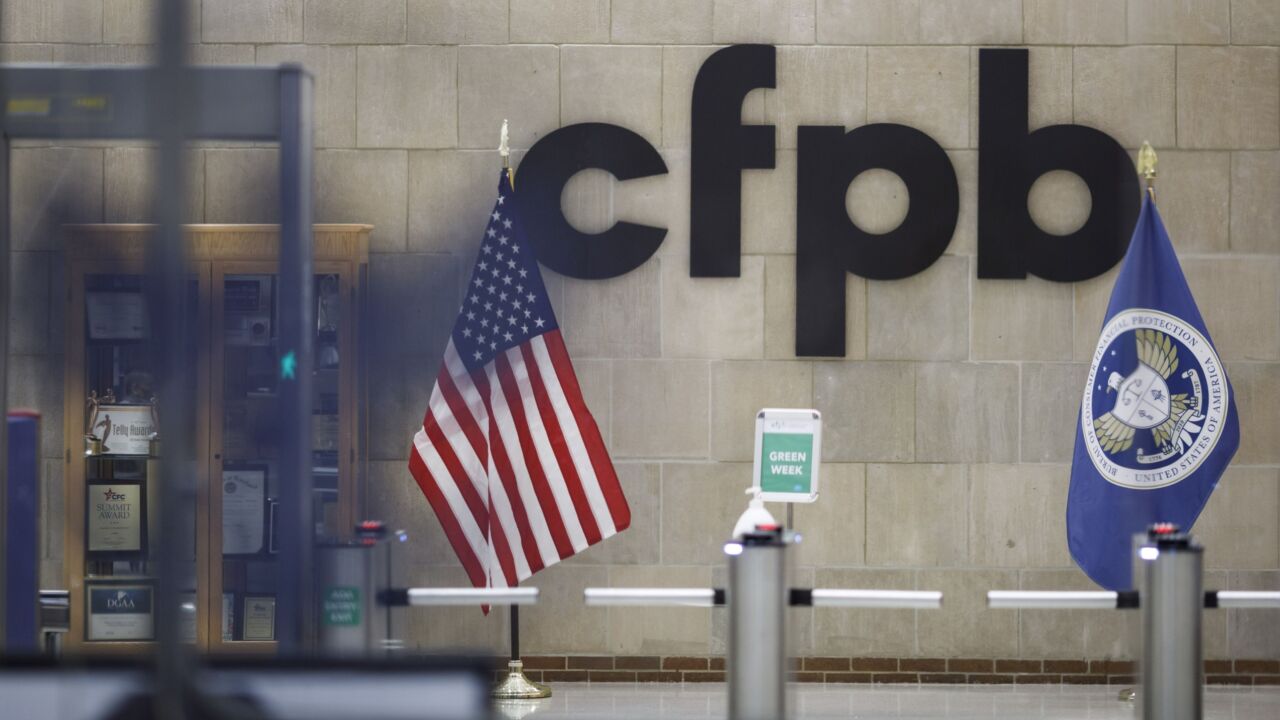
WASHINGTON — More than 26 million consumers are effectively "credit invisible" because they have no credit record and another 19 million are "unscored" because they have an insufficient or stale credit history, according to a report released Tuesday by the Consumer Financial Protection Bureau.
The study was part of the agency's ongoing efforts to examine the flaws in the credit reporting industry, but it was unclear how the new information will be used by the CFPB.
"What we're trying to do in this report, and other work that we're doing, is better understand the scope of credit reporting. And understand how it's affecting consumers, which consumers it's working well for, and which perhaps it may not be working as well for," said Ken Brevoort, section chief within the CFPB's Office of Research, during a conference call with reporters. The agency wants "to have a better understanding of exactly what interventions are possible in the regulatory space or perhaps, industry initiatives that may improve the functioning of these markets for the consumers' wellbeing."
The study appears more neutral than some of the CFPB's previous reports on credit reporting which often included specific calls to action. A previous report released a year ago found that medical debt "overly penalizes consumer credit scores." A few months later, Fair Isaac Co. said it would be changing its newest FICO scoring model to give less weight to certain medical debt in collection.
The report released Tuesday focuses on links between people with little or no credit data to low-income neighborhoods and minority consumers. The study found that in low-income neighborhoods, almost 30% of consumers were credit invisible while another 15% had records that can't be scored. Those percentages drop to 4% and 5%, respectively, in higher-income neighborhoods. Similar trends have long been seen in housing data that shows lower credit scores tend to be greater among low-income and minority applicants.
"The general findings are not surprising," said Nick Bourke, director of small dollar loans at The Pew Charitable Trusts. "The question that the report raises is: what are the ramifications of not having a credit report or credit score? That is something the CFPB should look at in terms of the use of credit scores or reports for access to housing, rental units or access to employment."
One concern raised by the CFPB is whether those consumers with little to no scoring data are being cut-off from the credit market or subject to more costly untraditional credit from "payday or auto-title lenders" who generally don't report scores to the main bureaus.
"Credit history is compiled into credit reports and used to produce credit scores, which lenders then use to help assess how likely consumers are to repay their debts," said CFPB Director Richard Cordray on a call with reporters. "Without credit reporting and credit scoring, it would be harder for financial service providers to assess and manage credit risk, and the supply of credit would be more expensive, more erratic and more constrained."
The study also found that black and Hispanic consumers were more likely to fall into the "invisible" and "unscorable" credit records than Whites and Asians. About 15% of blacks and Hispanics had no score compared to 9% of whites. And 13% of Blacks and 12% of Hispanics have unscorable records compared to 7% of white consumers, the report said.
"What may be most concerning is that our analysis suggests that these differences across racial and ethnic groups materialize early in the adult lives of these consumers and persist thereafter," Cordray said. "One explanation could be that these consumers face reduced access to credit that continues to hamper their opportunities for growth throughout their lives."
While there have been other regulatory reports linking lower credit scores to low-income and minority borrowers, the CFPB said this was a more comprehensive study that tracked down people who didn't have a score or enough information to build a credit score with the three main credit reporting agencies. The CFPB purchased de-identified data on roughly 5 million consumer credit records from one of the major credit reporting agencies and other stakeholders. The data was also compared to the 2010 Decennial Census and other data from the U.S. Census Bureau.
"Part of our mission is to empower economically vulnerable consumers... And in order to achieve that goal, we need to first understand the landscape that shapes how these consumers operate. Today's report helps shed some light on the challenges they face," Cordray said. "We will be able to take the information from today's report and apply it in the future as we continue to work on behalf of the most vulnerable consumers among us."





